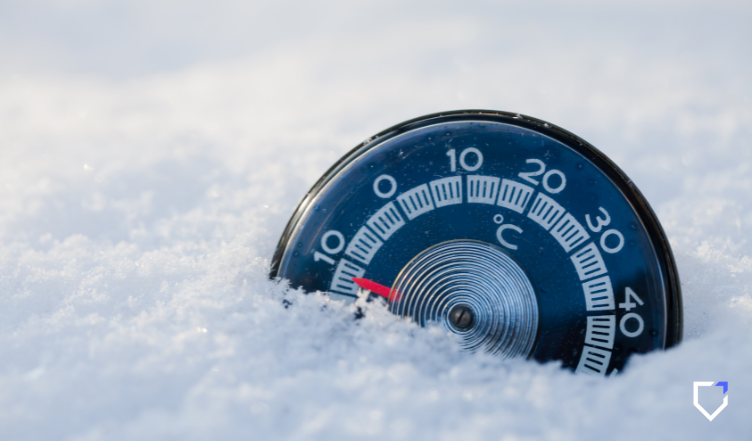A mid-winter arctic blast recently plunged US temperatures into record lows – including the coldest wind chill in history in Mount Washington, New Hampshire.
Cold air temperatures and severe winter weather present hazards for workers, from slippery roads and surfaces that put workers at risk of accidents and falls, to strong winds and environmental cold that can lead to cold stress. Cold stress can result in cold-related illnesses and injuries including frostbite, trench foot and hypothermia.
Cold weather workplace safety is an important aspect of occupational health and safety that employers must consider to protect their employees from hazardous conditions. According to the U.S. Bureau of Labor Statistics, nearly 200 occupational injuries and illnesses resulted from “environmental cold” conditions in 2020.
Employers can help protect workers from winter weather hazards and prevent workplace injuries by ensuring employees have the necessary training and resources to perform their job tasks safely.
Here are some top tips for employers when it comes to cold weather workplace safety:
Conduct a Risk Assessment
Employers must assess the risks associated with cold weather conditions in the workplace and take necessary measures to minimize or eliminate these risks. This includes identifying potential hazards such as exposure to low temperatures, wind, ice and snow, and determining the appropriate measures to mitigate these hazards.
Train Employees on Cold Weather Safety
Employees should be trained on the hazards of working in cold weather conditions, including how to recognize and respond to the symptoms of cold stress, including reddening skin, tingling, pain, swelling, leg cramps, numbness and blisters.
Workers should also receive training on the proper use of personal protective equipment (PPE), including how to dress appropriately for cold, wet and windy conditions. Protective clothing includes:
- at least three layers of loose-fitting lightweight clothing
- insulated and waterproof gloves and boots
- a hat that covers the ears
- water-resistant gear, if needed
- extra clothing in case a worker gets wet and needs to change
Employers may also consider providing workers with gear like winter coats/jackets and gloves to protect them from the cold weather.
Provide Engineering Controls
To reduce the risk of cold weather hazards, employers can use engineering controls. This might include:
- shielding work areas from drafts or wind to reduce wind chill
- using radiant heaters to warm outdoor workplaces like security stations
- using ice-melt on sidewalks, parking lots and other frequently traveled areas to prevent slips and falls
Maintain Equipment and Vehicles
Employers should maintain equipment and vehicles used in cold weather conditions to ensure they are functioning properly and that employees have access to safe and reliable equipment. This includes checking for leaks, cracks or any other issues that could cause equipment failure.
Implement Safe Work Practices
Employers can follow and implement safe work practices to protect workers from cold weather injuries and illnesses. These include:
- schedule frequent breaks in warm, dry areas, as cold weather can cause fatigue and slow down reaction time
- provide water or warm drinks to help keep employees hydrated, as cold weather can cause dehydration
- save maintenance and repair jobs for warmer months
- schedule work during the warmest part of the day
- use relief workers to assign extra workers for long, demanding jobs
Monitor Weather & Employees
Employers must regularly monitor the weather conditions and adjust their safety procedures accordingly. They should also monitor employees for signs of cold weather-related illnesses and injuries and take appropriate action to prevent further harm. Encouraging the use of the buddy system (working in pairs) is a good way to help workers monitor themselves and each other for cold stress.
Develop Emergency Response Plans
Emergency response plans to deal with cold weather-related incidents are important. These plans should include:
- a reliable means of communicating with workers
- procedures for responding to emergencies
- procedures for providing medical treatment/accessing first aid supplies
- plans to evacuate affected employees to a safe area
Cold weather safety is an important aspect of workplace safety and risk management that employers should take seriously. Winter storms can bring extremely cold temperatures, freezing rain, snow, ice and high winds. Following these best practices and tips will help employers to keep their employees safe and protected while working in cold weather conditions.
